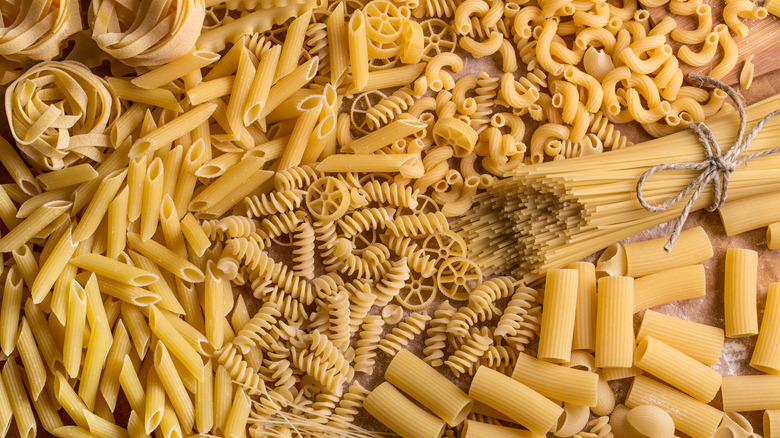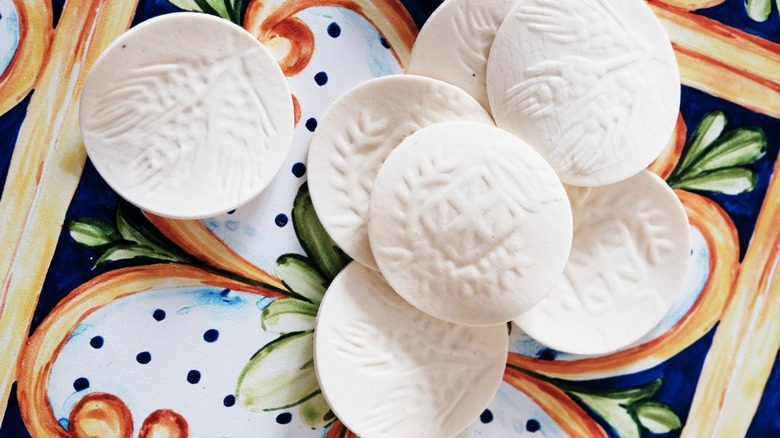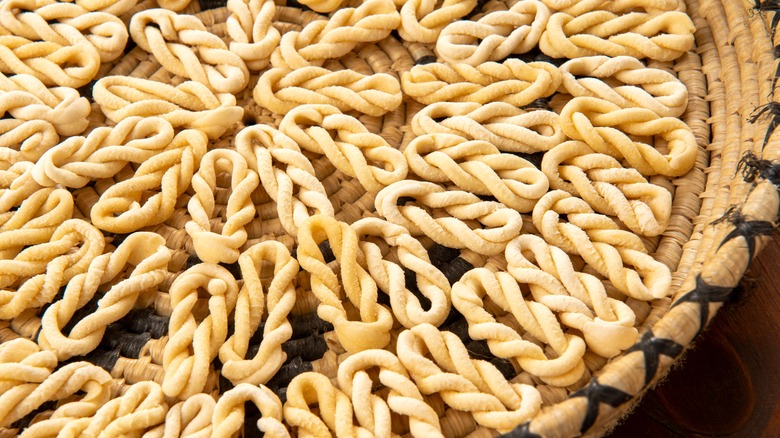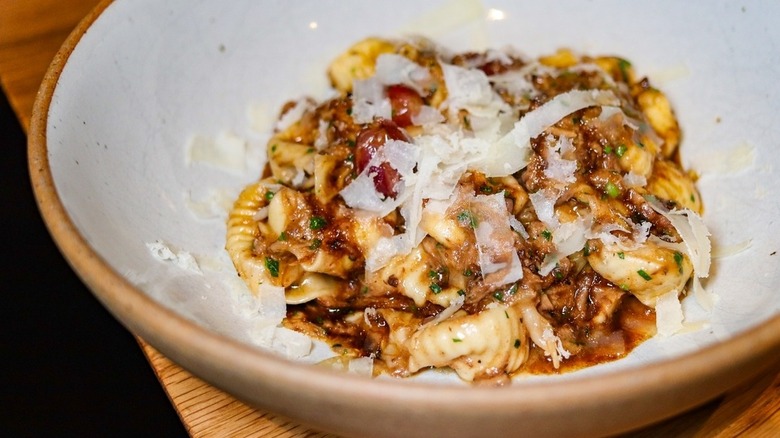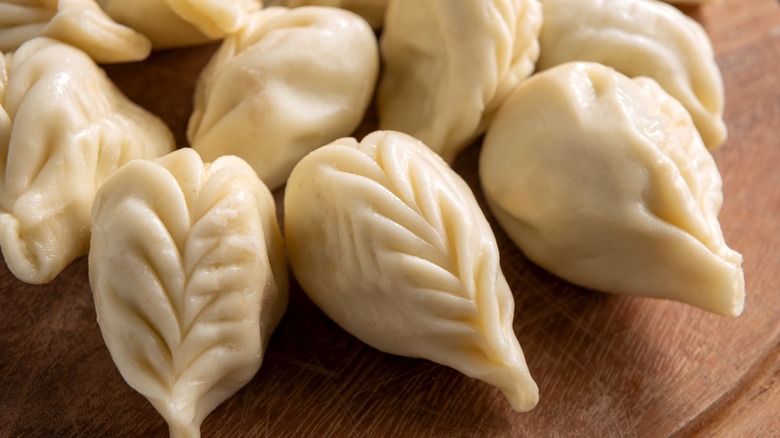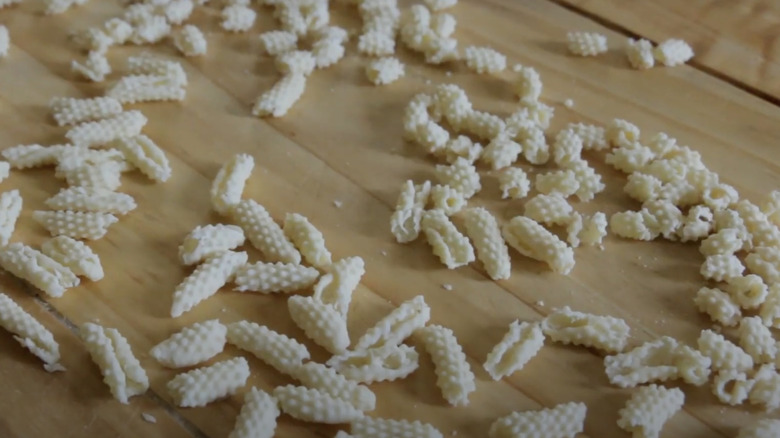5 Rare Pasta Shapes You've Never Seen Before
Pasta truly is the food that keeps on giving. With hundreds of recipe combinations, it always brings the warmth of a home-cooked meal. A huge part of the joy pasta offers is its myriad shapes and sizes, with each type better suited to a certain kind of sauce. While we've all heard of basic combinations — like spaghetti and meatballs, macaroni and cheese, and even fettuccini Alfredo — there's so much more to the world of pasta than what you'll find on your local grocery store shelves.
Many cultures have their own version of noodles — like Asian dishes with ramen or udon — but pasta is almost exclusively connected to Italy. So, if you've ever been to an Italian grocer or market, you've likely seen pasta shapes so rare they're almost too pretty to eat. There's plenty of fun to be had with obscure pasta shapes, as they can serve as both a decorative feature and a chance to explore recipes that complement their unique structure. Not to mention, rare pasta shapes are often tied to small, specific regions of Italy, making each dish its own mini history lesson. So, if you're tired of the same old penne or ziti dishes, or you're ready to move beyond making simple pasta shapes from scratch, take a leap into the world of uncommon pasta to expand your knowledge and palate.
Corzetti
Corzetti originated in Genoa and is designed to look like small, round coins or medallions (in fact, the name "corzetto" itself comes from a 14th-century Genoese coin). Other than their flat, circular shape, the key design element of this pasta is that each piece gets stamped with a wooden mold to leave coin-like markings on the pasta's face (and you can now find tools to emboss your own dough if you make corzetti from scratch). Pesto is perhaps the most classic pairing with corzetti, as the delicate sauce clings beautifully to its intricate patterns.
Lorighittas
The Sardinia region of Italy is home to many rare pasta shapes, including lorighittas. These are shaped like a skinny, twisted bracelet or earring and are often served with marinara sauce and a protein like sausage or chicken.
This pasta is unique to the southwest of Sardinia and must be made by hand to achieve the extremely thin strands that make the shape special. Another thing that sets this pasta apart is that the dough does not use eggs — just durum wheat flour and water.
Su Pitzosu
Another Sardinian shape, Su Pitzosu, is actually made by adding an extra step to another more common pasta: garganelli, a classic tube pasta with small outer ridges. To turn them into Su Pitzosu, you pinch the ends together to create an ear-like shape.
Su Pitzosu are known to be served with decadent sauces, particularly Sardinian varieties that include meat, like ragù. Their hollow, rounded shape makes them ideal for scooping up and trapping extra sauce for a flavorful bite.
Pì fasacc'
While the thought of stuffed pasta might conjure images of ravioli pillows, there are plenty of other ways to stuff dough — for example, pì fasacc', also known as swaddled babies, which comes from Lombardy, Italy. Much like a classic ravioli, pì fasacc' has a cheese-based filling that is then wrapped in pasta dough. What makes this shape unique from other stuffed pastas is the way the dough is wrapped: The edges are almost braided together to form a pouch that resembles a swaddled child.
Macarrones de ungia
This final rare pasta shape also comes from Sardinia, and its recipe is almost exclusively passed down by word of mouth and collective knowledge. Macarrones de ungia — which in the local dialect means "fingernails" — are thin, bumpy pastas that resemble (you guessed it) nails.
They're made by rolling small sections of dough along a perforated piece of metal — similar to a smooth cheese grater — to form the little bumps that add texture. Macarrones de ungia is typically served with a basic tomato sauce and is a simple delicacy that's easy to recreate at home.

